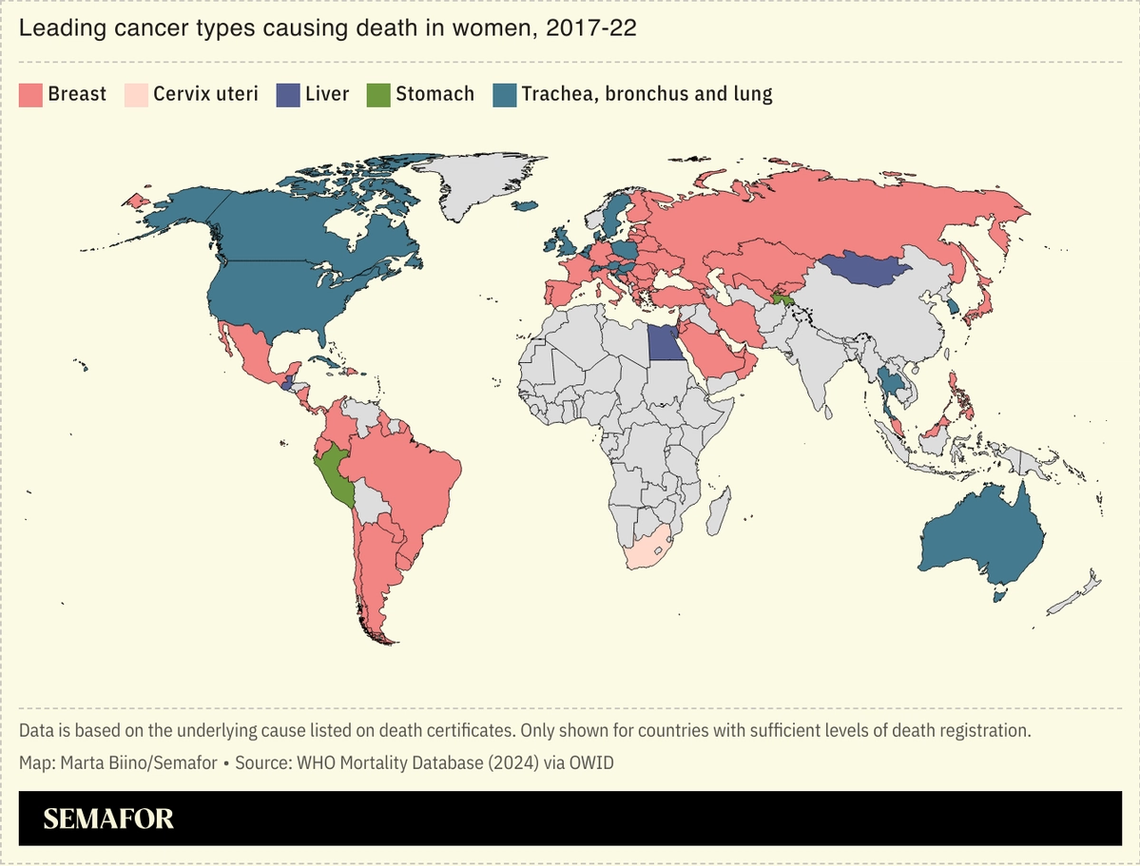| In today’s edition, we analyze Meta’s shift to give content free rein and Nvidia’s new open-source t͏ ͏ ͏ ͏ ͏ ͏ |
 | Reed Albergotti |
|
Hi, and welcome back to Semafor Tech.
Mark Zuckerberg’s blunt reversal this week puts an end to the era of corporate content moderation. Whether you view it as idealistic or sinister, content moderation has now ended as a failed experiment — even by its own terms.
In the months after the 2016 US presidential vote, when it became clear that Russia had orchestrated a social media disinformation campaign to interfere in the election, Facebook faced a deafening drumbeat of criticism.
Facing calls to beef up its defenses against “fake news,” CEO Mark Zuckerberg argued then that his company should not become “arbiters of truth.”
Nevertheless, he went along with an unprecedented push to vet the speech of billions of people.
It’s clear now that Zuckerberg’s first instincts were correct. And it’s time to admit that the well-meaning experiment was misguided.
Millions of people, some with crazy views and some with unorthodox or conservative ones, saw their posts censored. But the appropriate targets of moderation — false health information, foreign propaganda, bizarre conspiracy theories — flourished anyway. The ultimate result of the era of content moderation was to embolden the political right and add credibility and reach to lies and half-truths on social media.
Indeed, for all the effort and bitter controversy, half the United States came to believe Covid was a hoax and the 2020 presidential election was stolen.
On Tuesday, Zuckerberg announced he would dismantle the company’s content-vetting machine, turning over moderation to users.
The move was bashed by those on the left, who criticized Zuckerberg for kowtowing to President-elect Donald Trump, who was once banned by Facebook. Trump praised the move, and said it “probably” came as a result of his own threats.
But Zuckerberg’s critics fail to recognize the moment, just as they did in 2016. The idea that the totality of internet content could be corralled into neatly defined pens was always ludicrous.
Instead, free societies must learn to live with a certain level of, you might say, viral load flowing through online discourse. The answer, as with Covid, was always inoculation rather than elimination. Monday’s announcement was a step toward acceptance of that reality.
 Daniela Amodei, president and co-founder of Anthropic. Steve Marcus/Reuters. Daniela Amodei, president and co-founder of Anthropic. Steve Marcus/Reuters.➚ MOVE FAST: Valedictorian. The AI fundraising boom continues, with Anthropic looking to raise $2 billion at a $60 billion valuation, The Wall Street Journal reported. That’s more than triple its worth, at least on paper, from a year ago, making it one of the most valuable startups in the US. ➘ BREAK THINGS: Expelled. China’s Tencent and CATL are considering legal options after the Pentagon deemed the firms as “military companies.” Meanwhile, Apple is still banned from selling the iPhone 16 in Indonesia even after pledging to build a local production facility. |
|
In a new study, AI helped doctors identify more cases of breast cancer in images of mammograms than when doctors were working alone. Radiologists in Germany spent nearly two years screening more than 460,000 women, with roughly half of the scans utilizing an AI model trained on images of cancerous and noncancerous mammograms in addition to human evaluation. Without the AI, physicians found six cases of breast cancer in every 1,000 patients. When supplementing AI, they found seven — and had fewer false positives.  Despite mounting concerns about AI’s shortcomings and potential harm to humans, there are use cases that show AI can make our lives better. This mammogram scanning technology could help doctors more quickly and efficiently identify cancer spots, freeing up time for patient care and research. Scientists are also developing other AI models that can detect cancers in different areas of the body and predict a patient’s chance of survival. |
|
 The amount Amazon Web Services will spend in the state of Georgia to expand its AI infrastructure. The US South has emerged as prime real estate for AI facilities, with OpenAI’s plans to rent data center space in Texas and Elon Musk’s xAI expanding its supercomputer in Memphis. |
|
 Stay ahead of the curve with GZERO’s weekly AI newsletter. GZERO’s expert team delves into the most important issues and innovations in artificial intelligence, breaking down the AI revolution from a geopolitical lens. From the latest on campaign disinformation and regulation to industry insights and global trends, they offer a smart weekly summary of all you need to know about AI. Sign up here — it’s free. |
|
The European Union is now fining itself for data protection violations. A German citizen will get €400 (or $412 US dollars) because his IP address was sent to Meta and Amazon Web Services without permission when he signed up for a conference using the “Sign in with Facebook” feature. While the case isn’t all that monetarily significant, it’s symbolic of the legacy of cumbersome EU privacy legislation that hasn’t really changed the privacy landscape, other than to annoy people with incessant popups and penalize shareholders with fines and protracted legal battles. |
|
 Steve Marcus/Reuters Steve Marcus/ReutersThe Consumer Electronics Show, which for years has been rather sleepy in terms of big announcements, got a gift from Nvidia CEO Jensen Huang earlier this week when he announced the company’s new gaming GPU and other AI-related products. It was Huang’s comments on robotics that were the most revealing. He announced a new, open-source tool called Cosmos that can generate lifelike training data for robotics. He said it will reduce the cost of developing self-driving car technology, which he predicted will be the first multitrillion-dollar robotics market. Nvidia is partnering with Toyota to provide an autonomous driving operating system. Because generative AI is able to create photorealistic, synthetic content, it’s possible to develop simulations for robotics training that previously would have taken years of real-world data gathering. Autonomous driving companies are already using this method, but now Nvidia is giving it away by open-sourcing it. The reason: The vast majority of robotics training will likely use Nvidia chips. As I mentioned in the year-end predictions, I think 2025 is going to mark an inflection point for robotics, perhaps not in the form of consumer products, but in breakthroughs that will lead to some mind-blowing advances down the road. |
|
  Jason Lee/Reuters Jason Lee/ReutersChina, the world’s largest greenhouse gas emitter, is expected to soon announce new climate targets, Xiaoying You reported. Beijing’s announcement will have a profound impact on the world’s effort to limit global warming, both because of the country’s huge emissions volume and because this climate plan will extend to 2035, into a period when China moves past peak emissions. |
|








